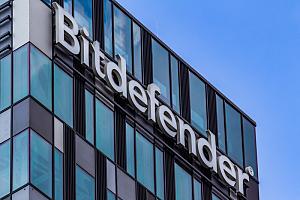More than a third of cyberattacks in Romania used ransomware, Orange report shows

Roughly 35% of cyberattacks in Romania were done through ransomware, while the most frequently attacked region was Bucharest. Among all business sectors, the pharmaceutical one was the most heavily targeted.
The data comes from the Business Internet Security 2022 report put together by Orange Business Services. The report takes a detailed look at the local business environment from a cybersecurity angle and highlights solutions for the vulnerabilities it discovered.
According to the report, the last year continued the trend of increasing cyber-attacks, a determining factor being the remote or hybrid working regime adopted by companies. Attacks were not only more frequent but also more sophisticated. DDoS attacks increased by 21% relative to last year, while ransomware attacks also increased by 18%.
Ransomware is a type of malware that threatens to permanently block the victim’s access to their data unless a ransom is paid. Some hackers go a step further, threatening to publish sensitive or personal data. Denial-of-service attacks (DDoS) came in second (25%), followed by phishing (21%).
Many of the cyberattacks this year were triggered by the geopolitical context in the region, specifically the war in Ukraine. The pro-Russian hacker group Killnet claimed several attacks against government websites in early May of this year. Almost 300 sites were targeted in total, among which those of newspapers, hotels, public institutions, and booking sites, aside from those belonging to the Ministries of Finance, Defense, Health, Internal Affairs, and the tax collection agency ANAF.
The most targeted sectors were healthcare and pharmaceuticals, which received roughly a third of the total number of attacks. Government and utility companies came in second (23%), followed by energy (22%), retail (16%), and transportation (7%).
Geographically, Bucharest, the seat of the government, central administration, and the headquarters of numerous businesses, was the most targeted region in Romania, receiving almost half of the cyber-attacks uncovered in the report. Almost a million attacks per month directed to entities registered in Bucharest were blocked during the past year. The western city of Timisoara comes in second, with a quarter of a million attacks, followed by Iasi.
Orange’s Business Internet Security report, compiled by experts at Orange Business Services, aims to raise awareness of the vital importance of cybersecurity.
(Photo source: Audiohead | Dreamstime.com)













